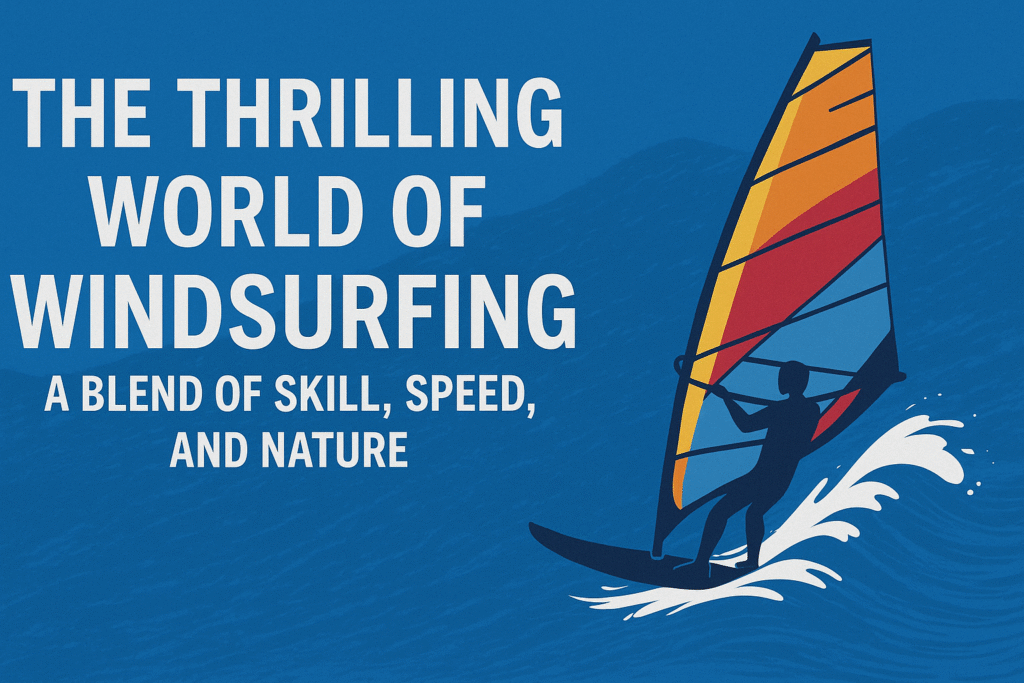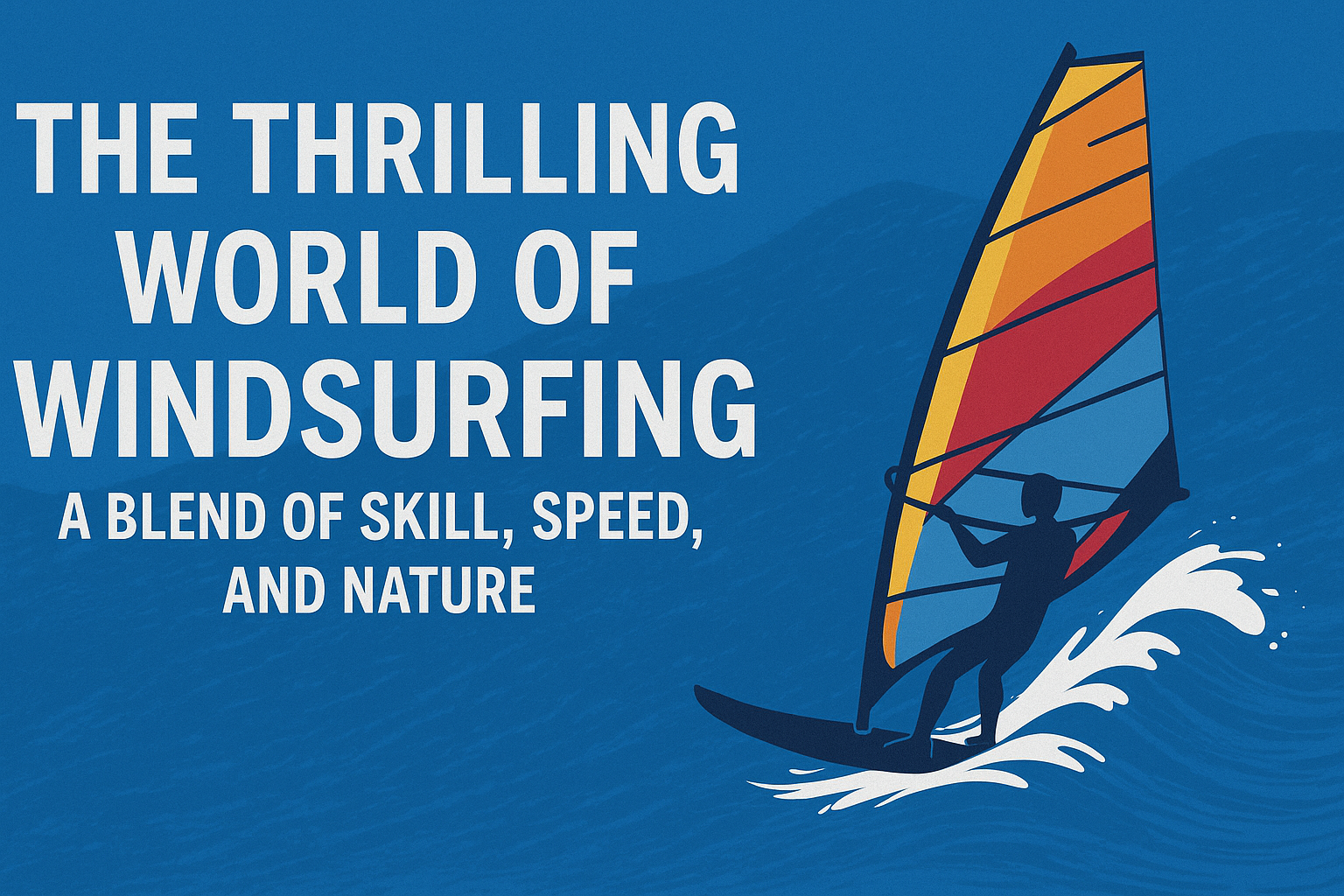Windsurfing, also known as sailboarding, is a dynamic water sport that combines elements of surfing and sailing. Since its inception in the mid-20th century, windsurfing has evolved into a global phenomenon, attracting adventurers, athletes, and nature enthusiasts alike.
This article explores the history, equipment, techniques, and cultural significance of windsurfing, shedding light on why it remains a beloved pastime for millions.
A Brief History of Windsurfing
The origins of windsurfing can be traced back to the late 1940s and early 1950s, when innovators began experimenting with ways to combine surfing and sailing. The modern windsurfing board, however, was patented in 1968 by Jim Drake, an aeronautical engineer, and Hoyle Schweitzer, a surfer.
Their design featured a sail mounted on a mast, attached to a surfboard-like base, allowing riders to harness the wind for propulsion. This invention revolutionized water sports, offering a new way to glide across the water.
By the 1980s, windsurfing had gained immense popularity, particularly in Europe and North America. The sport’s inclusion in the 1984 Los Angeles Olympics as a men’s event (and later for women in 1992) cemented its status as a competitive discipline.
Today, windsurfing is practiced worldwide, from the windy beaches of Maui, Hawaii, to the coastal waters of Tarifa, Spain.

Essential Windsurfing Equipment
Windsurfing requires specialized gear that balances functionality and performance. The core components include:
- Board: Windsurfing boards vary in size and shape depending on the rider’s skill level and the type of windsurfing. Beginner boards are wider and more stable, while advanced boards are narrower for speed and maneuverability.
- Sail: The sail, typically made of lightweight, durable materials like Dacron or monofilm, is attached to a mast and controlled by the rider. Sail sizes range from 2 to 12 square meters, with smaller sails used in strong winds and larger ones in lighter conditions.
- Mast and Boom: The mast supports the sail, while the boom is a horizontal bar that the rider holds to control the sail’s angle. Both are usually made of lightweight materials like carbon fiber or aluminum.
- Fin: Located at the bottom of the board, the fin provides stability and helps with steering.
- Wetsuit and Harness: A wetsuit protects against sunburn, abrasions, and cold water, while a harness allows the rider to use body weight to control the sail, reducing arm fatigue.
Modern advancements have made equipment lighter, more durable, and easier to use, making windsurfing accessible to beginners while still challenging for experts.
Mastering Windsurfing Techniques
Windsurfing demands a combination of balance, strength, and wind-reading skills. Beginners typically start with the following steps:
- Board Positioning: Stand on the board with feet shoulder-width apart, knees slightly bent, and the sail in front of you.
- Uphauling: Pull the sail out of the water using the uphaul rope, keeping the board stable.
- Sailing Stance: Lean back slightly, holding the boom with both hands, and use your body to steer by tilting the sail forward or backward.
- Tacking and Jibing: Tacking involves turning the board by moving the sail across the wind, while jibing is a faster turn performed downwind. Both maneuvers require precise coordination.
As riders progress, they can explore advanced techniques like planing (skimming across the water at high speeds), waterstarting (using wind to lift the sail directly from the water), and performing jumps or loops for freestyle windsurfing.
Types of Windsurfing
Windsurfing offers a variety of disciplines to suit different preferences:
- Freeride: A versatile style focused on casual sailing, suitable for beginners and intermediates.
- Wave Sailing: Performed in ocean waves, this style involves jumps, spins, and surfing-like maneuvers.
- Slalom: A high-speed racing discipline where riders navigate a course marked by buoys.
- Freestyle: A creative style involving tricks, spins, and flips, often performed in flat water.
- Foil Windsurfing: A newer trend using a hydrofoil to lift the board above the water, reducing drag and enabling smoother rides in light winds.
Each discipline requires specific skills and equipment, allowing windsurfers to tailor their experience to their goals and environment.
The Global Windsurfing Community
Windsurfing fosters a vibrant, inclusive community. From local beach clubs to international competitions like the Professional Windsurfers Association (PWA) World Tour, enthusiasts connect through their shared passion for the sport.
Social media platforms, including X, showcase stunning windsurfing videos, gear reviews, and tips from pros, further uniting the community.
Destinations like Hood River, Oregon, and the Canary Islands are renowned for their consistent winds and vibrant windsurfing scenes. Events such as the Windsurf World Cup in Sylt, Germany, draw top athletes and spectators, highlighting the sport’s competitive edge and cultural significance.
Why Windsurfing Endures
Windsurfing’s appeal lies in its unique blend of adrenaline, skill, and connection to nature. Riders must read the wind and waves, adapting to ever-changing conditions, which creates a profound sense of harmony with the environment.
The sport also offers physical benefits, engaging core muscles, improving balance, and providing a full-body workout.
For many, windsurfing is more than a sport—it’s a lifestyle. Whether chasing the perfect wave, competing in a slalom race, or simply gliding across a tranquil lake, windsurfers find joy in the freedom and challenge of riding the wind.
As technology advances and new generations discover the sport, windsurfing continues to evolve, ensuring its place as a thrilling and timeless pursuit.
